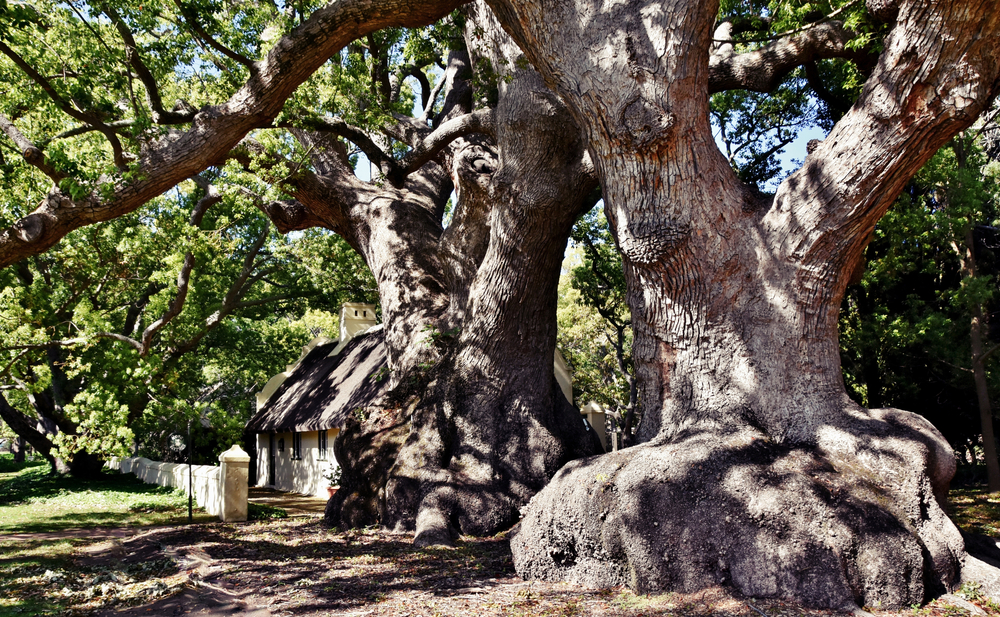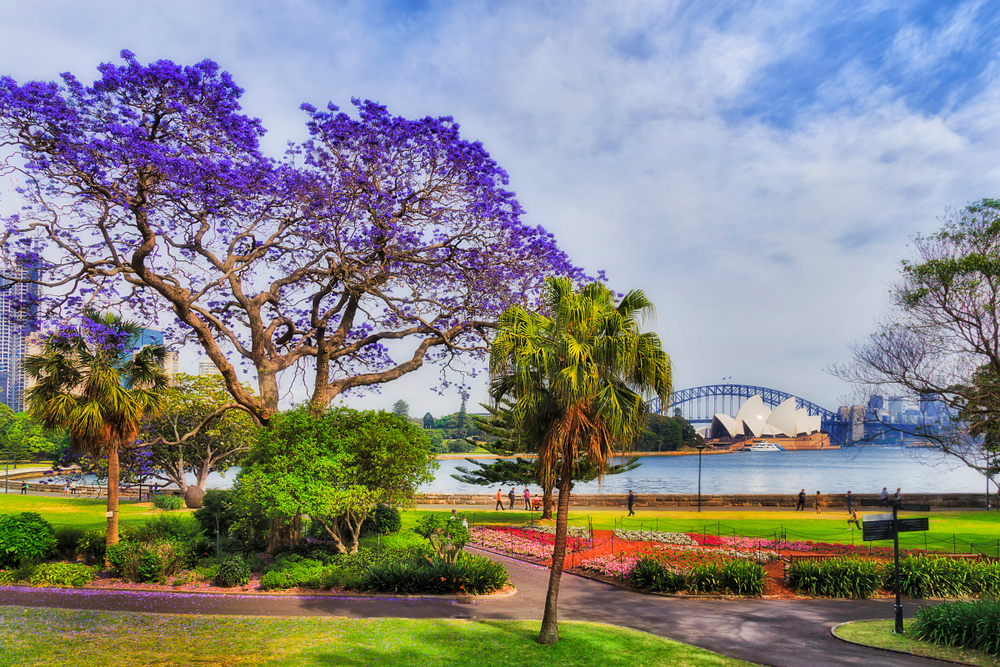In Sydney’s North Shore, homeowners often plant fast-growing trees for their instant shade, privacy, and visual appeal. While these trees can provide quick results, they often come with hidden drawbacks that become more evident over time, leading to property damage, excessive maintenance, and environmental disruption.
In this article, we explore the five fast-growing trees that many Sydney homeowners now regret planting, shedding light on why these trees can become problematic and offering insights on how to make better choices for your garden.

1. Camphor Laurel (Cinnamomum camphora)
Why Was It Planted?
Introduced to Australia in the 19th century, Camphor Laurel was once praised for its rapid growth, glossy green foliage, and strong timber. Homeowners were drawn to its fragrant canopy, which provided fast shade and an attractive ornamental feature in gardens. However, its lack of natural predators and its resilience to different climates allowed it to spread uncontrollably, often outcompeting native species.
How to Identify Camphor Laurel
- Leaves: Glossy, bright green with a wavy edge and a strong camphor scent when crushed.
- Bark: Rough, grey-brown with vertical fissures.
- Flowers & Fruit: Small, white flowers in spring followed by dark berries.
- Size: Grows up to 20 metres, with a dense evergreen canopy.
Why It’s a Problem
- Invasive Growth: It crowds out native plants and disrupts local ecosystems, reducing biodiversity.
- Allelopathy: It releases chemicals into the soil that inhibit the growth of surrounding plants.
- Ecosystem Impact: The displacement of native flora harms wildlife that depend on indigenous plants for food and shelter.
- Soil Erosion: Its dense root system alters soil composition, increasing the risk of erosion.
Managing Camphor Laurel
Managing this tree involves early identification and removal, which often requires mechanical means and herbicide application. Replanting native species helps restore the local ecosystem and limit the tree’s impact.

2. Liquidambar (Liquidambar styraciflua)
Why Was It Planted?
Liquidambar, also known as Sweet Gum, was once a favourite for its stunning autumn colours and rapid growth. Its symmetrical shape and large canopy made it ideal for creating an immediate visual impact, while its resilience to pests and fast growth made it a low-maintenance option.
How to Identify It
- Leaves: Star-shaped, deeply lobed, and glossy green, turning vibrant colours in autumn.
- Bark: Grey-brown and deeply furrowed.
- Fruit: Spiky, woody balls ("gum balls") that persist through winter.
- Size: Can grow up to 20-30 metres tall, with a dense canopy.
Why it’s a Problem
- Aggressive Roots: The roots spread widely, damaging pavements, foundations, and underground pipes.
- Hazardous Fruit: Falling gum balls create safety risks and require constant cleanup.
- Overgrowth: The rapid growth leads to overcrowding, requiring frequent pruning and maintenance.
- Impeded Vegetation Growth: The dense canopy prevents grass and other plants from thriving beneath the tree.
Addressing Liquidambar Issues
Regular pruning, root control, and removal of gum balls are essential for managing this tree. For severe cases, professional help from an arborist may be needed.

3. Poplar (Populus spp.)
Why Was It Planted?
Poplars were chosen for their quick growth and vertical form, making them perfect for privacy screens and windbreaks. Homeowners appreciated their ability to establish quickly and affordably.
How to identify it
- Leaves: Triangular or heart-shaped, with serrated edges.
- Bark: Smooth greyish bark, furrowing as the tree matures.
- Flowers: Catkins that appear early in spring.
- Size: Reaches heights of 15-50 metres, depending on species.
Why it’s a Problem
- Invasive Roots: Poplars’ roots invade pipes and foundations, causing structural damage.
- High Maintenance: Prone to branch breakage, debris accumulation, and pest problems.
- Short Lifespan: Despite fast growth, they have a relatively short lifespan, leading to early removal.
- Allergies: The pollen from poplars exacerbates seasonal allergies, causing discomfort to sensitive residents.
Dealing with Poplar Issues
Poplars may need early removal, or root management to avoid damage. Replacing them with smaller, more manageable trees is a practical solution.
4. Willow (Salix spp.)
Why Was It Planted?
Willows were once favoured for damp properties or areas with water features. Known for their graceful, weeping form and fast growth, they became a go-to tree for Sydney gardens.
How to Identify It
- Leaves: Long, slender, and finely serrated.
- Bark: Greyish-brown and deeply fissured.
- Flowers: Catkins that bloom in early spring before the leaves appear.
- Size: Typically smaller than other trees, but can grow rapidly in the right conditions.
Why it’s a Problem
- Aggressive Roots: Willows seek out water, damaging pipes and structures.
- Water Consumption: Their high water demand depletes local resources and lowers water tables.
- Constant Mess: They shed leaves, twigs, and bark year-round, creating a maintenance headache.
- Weak Branches: Their brittle wood leads to breakages during storms, posing safety risks.
Managing Willow Problems
Regular pruning, root barriers, and monitoring for disease are key steps in managing willows. If damage is significant, replacement with non-invasive species is recommended.

5. Jacaranda (Jacaranda mimosifolia)
Why Was It Planted?
Jacarandas are loved for their stunning purple flowers and vibrant visual appeal. They were planted to add colour and shade to gardens, with the added benefit of fast growth, making them an attractive choice for many homeowners.
How to identify it
- Flowers: Vibrant clusters of lavender-blue trumpet-shaped flowers.
- Leaves: Soft, fern-like, bipinnate leaves.
- Bark: Thin, grey-brown bark that becomes slightly scaly as it matures.
- Size: Reaches up to 15 metres in height, with a wide, spreading canopy.
Why it’s a Problem
- Invasive Roots: The Jacaranda’s roots can spread widely and damage pavements and underground utilities.
- Messy Blooms: The fallen flowers create a slippery surface and require frequent cleaning.
- Self-Seeding: The tree tends to self-seed, leading to unwanted saplings.
- Shade Issues: Its dense canopy can hinder the growth of other plants beneath it.
Managing Jacaranda Problems
Jacarandas require regular maintenance, including flower cleanup and root management. For more significant growth or damage, it’s best to seek professional help.
Before You Plant: Think Long-Term
- Consider the Tree’s Mature Size: Researching the full-grown size of a tree is vital to avoid overcrowding, interference with structures, or power lines. Understanding this helps ensure the tree will thrive without becoming a future burden.
- Evaluate Root System Behaviour: Aggressive roots can cause serious problems if planted near foundations, pipes, or walkways. Choose species with non-invasive roots, especially in confined spaces.
- Assess Maintenance Requirements: Understand the upkeep required for the tree, including leaf drop, pruning, and pest management. Some trees need more care than others, so make sure you’re prepared.
- Factor in Spacing: Ensure trees have enough space to grow without competing with other plants or encroaching on structures. Proper spacing will help maintain a healthy and harmonious garden.
- Check for Council Restrictions: Before planting, verify with your local council about any restrictions or guidelines regarding tree species and placement. Some species may be prohibited or require permits.
What You Can Do About Problem Trees
- Assess the Tree’s Impact: Evaluate the tree’s current state, its health, and the damage it’s causing to nearby structures. Understanding the severity will help guide the necessary action.
- Consult Local Council: Consult your local council for guidance on permits or any regulations regarding tree removal or pruning. They can also provide resources for managing problematic trees.
- Hire a Certified Arborist: Certified arborists can assess the tree’s health, recommend appropriate actions, and safely carry out any necessary work.
- Replace with Suitable Species: If removal is necessary, replace the tree with a more suitable, low-maintenance species that won’t cause future issues.
- Act Early to Prevent Escalating Costs: Address tree problems early to avoid costly repairs and damage. Regular inspections and proactive management can save you time and money in the long run.
In conclusion, while fast-growing trees can offer immediate benefits to your garden, the long-term challenges they bring—such as invasive roots, excessive maintenance, and environmental impact—should not be overlooked. If you're already dealing with one of these trees or planning your next landscaping project, reach out to North Shore Tree Services for expert advice and professional tree care. Let us help you create a beautiful, low-maintenance garden today!

